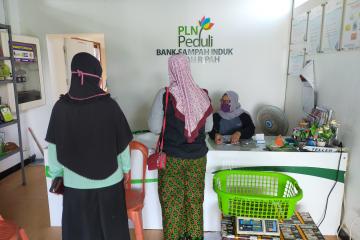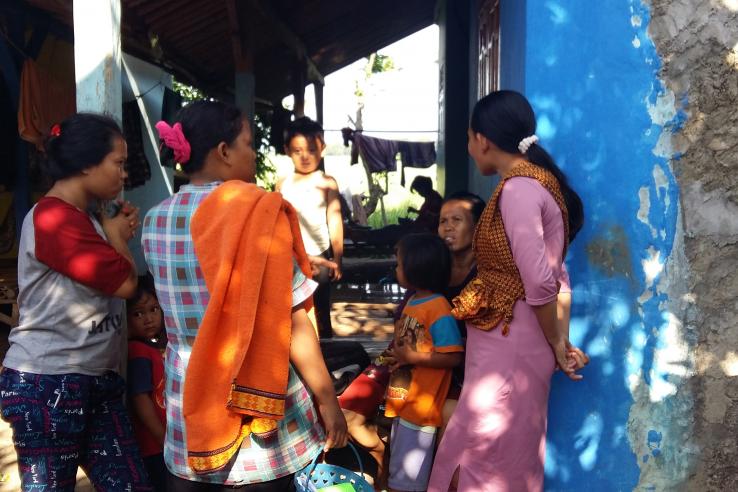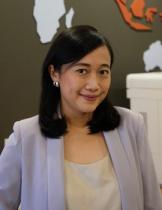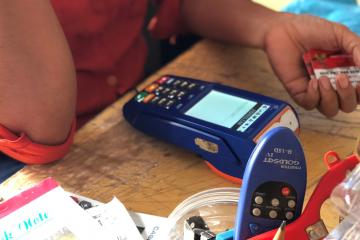
IFII Blog Series: Applying a gender lens in measuring the impact of DFS on women’s empowerment

Read this post in Bahasa Indonesia.
For men and women, having equal access to digital financial services (DFS) does not guarantee the equal use and equal benefit of DFS. In the previous blog post in this series, we discussed how contextual and needs-based design are key to increasing the adoption and benefits of DFS for women. Moreover, to ensure that programs aimed at empowerment are having their intended effect, it is important to understand and apply a gender lens in measuring the program’s impact. However, measuring the impact of DFS on the complex and multi-faceted concept of women’s empowerment can be challenging.
As part of J-PAL Southeast Asia’s Inclusive Financial Innovation Initiative‘s (IFII) commitment to support Indonesian stakeholders in advancing DFS inclusion, IFII held a training on Evaluating Social Programs with a specific module on Applying a Gender Lens in Impact Measurement. The module aims to help DFS practitioners in Indonesia understand and apply the empowerment concept when measuring the impacts of financial inclusion programs with randomized evaluations. This blog summarizes learnings from the August 2021 training attended by 37 participants from seven organizations, including two government institutions.
Understanding empowerment and when should it be measured
“[Empowerment is] the process by which those who have been denied the ability to make strategic life choices acquire such ability” - Naila Kabeer
Different programs might impact empowerment in different ways. J-PAL’s practical guide recommends that stakeholders focus on three different aspects of women’s empowerment:
- Women’s access to resources that enhance their ability to make decisions
- Women’s agency, which means their ability to make decisions or participate in decision-making
- Meaningful improvements in women’s well-being as a result of increased access to resources and agencies
Moreover, it is important to take into account the social norms and cultural considerations that may affect the process of empowerment where the programs take place. For example, a re-analysis of evaluations in India, Ghana, and Sri Lanka found that women benefited more from access to grants and microcredit when they were the sole business owners in the household. This could be because norms that prioritize resources for men in some communities hinder women from gaining access to resources, even when these resources are disbursed in the woman’s name.
Additionally, even if a program is not designed for women, there might be variations in program impacts due to gender differences. In Kenya, for example, free ATM cards increased usage of joint and male-owned accounts with no impact for women-owned accounts. The study presents evidence that women, who typically have less household bargaining power than their husbands, may have used ATM-enabled accounts less because they were worried about others accessing their funds through the ATM. Applying a gender lens in impact evaluation may help policymakers to better understand the program’s impact for both men and women.
Aligning theory of change and indicators to measure women’s empowerment
When women’s empowerment is the primary or secondary objective of a program, measuring empowerment will be necessary to evaluate whether the program has delivered its intended benefits. During the training, IFII Co-Chair and J-PAL affiliate Simone Schaner encouraged participants to look at their program’s theory of change (TOC) through a gender lens to think about how the programs might create empowerment and how to determine the indicators to measure empowerment.
During a needs assessment, practitioners should think carefully about gender sensitivity in the program’s design, as women and men might have different needs. Social norms and other contextual factors can lead to different program output for men and women. Subsequently, factoring a gender lens into a TOC can help to map the program's short-, medium-, and long-term impacts on women’s empowerment, which is also helpful in determining indicators for measuring impact.
Challenges in measuring women’s empowerment
Even with the help of a TOC framework, determining the indicators and measuring empowerment can present some challenges. First, it might be difficult to observe and measure women’s ability to influence or make decisions. Second, the manifestations of empowerment differ depending on the context. Third, measuring women’s preferences is challenging in contexts where women have internalized society’s views or when women lack power and voice. Finally, while empowerment is a process and measuring only its partial outcomes may lead to an inaccurate picture, researchers typically need to find a way to focus on certain aspects of the process in order to craft streamlined, cogent impact evaluations.
J-PAL recommends adjusting the measurement method to the context, considering locally-tailored indicators of women’s empowerment, measuring fundamental outcomes related to well-being, and prioritizing the indicators related to the main objectives of the programs. For further recommendations, see J-PAL’s practical guide to measuring women’s empowerment.
Promoting women’s empowerment objectives in financial inclusion programs
In 2020, the Government of Indonesia (GoI) launched the National Women’s Financial Inclusion Strategy (SNKI-P) aimed at accelerating financial inclusion for women. Among others, SNKI-P’s mission is to encourage Indonesian policymakers and stakeholders to integrate women’s empowerment objectives into financial inclusion programs and to improve the use of gender-disaggregated data. GoI’s priorities to advance women’s empowerment are also reflected in the Ministry of Women’s Empowerment and Child Protection’s main strategies.
To help achieve GoI’s target of 90 percent financial inclusion by 2024, it is important for stakeholders to apply a gender lens in designing, implementing, and measuring the impact of financial inclusion programs. For example, financial literacy programs or digital payment system onboarding can be developed and targeted specifically for women. The government could also support a broader range of loans for women-owned businesses. Further, collecting gender-disaggregated data could help to uncover insights related to women-specific needs in financial inclusion programs. Lastly, measuring the impact of women’s empowerment programs can help stakeholders understand whether the program resulted in meaningful improvements in well-being and life outcomes.
IFII is committed to support the GoI’s missions through providing access to high-quality evidence and capacity-building assistance on applying a gender lens in program design and impact evaluation of financial inclusion programs. To learn more, please contact [email protected].
Read the third blog in the series (English).

